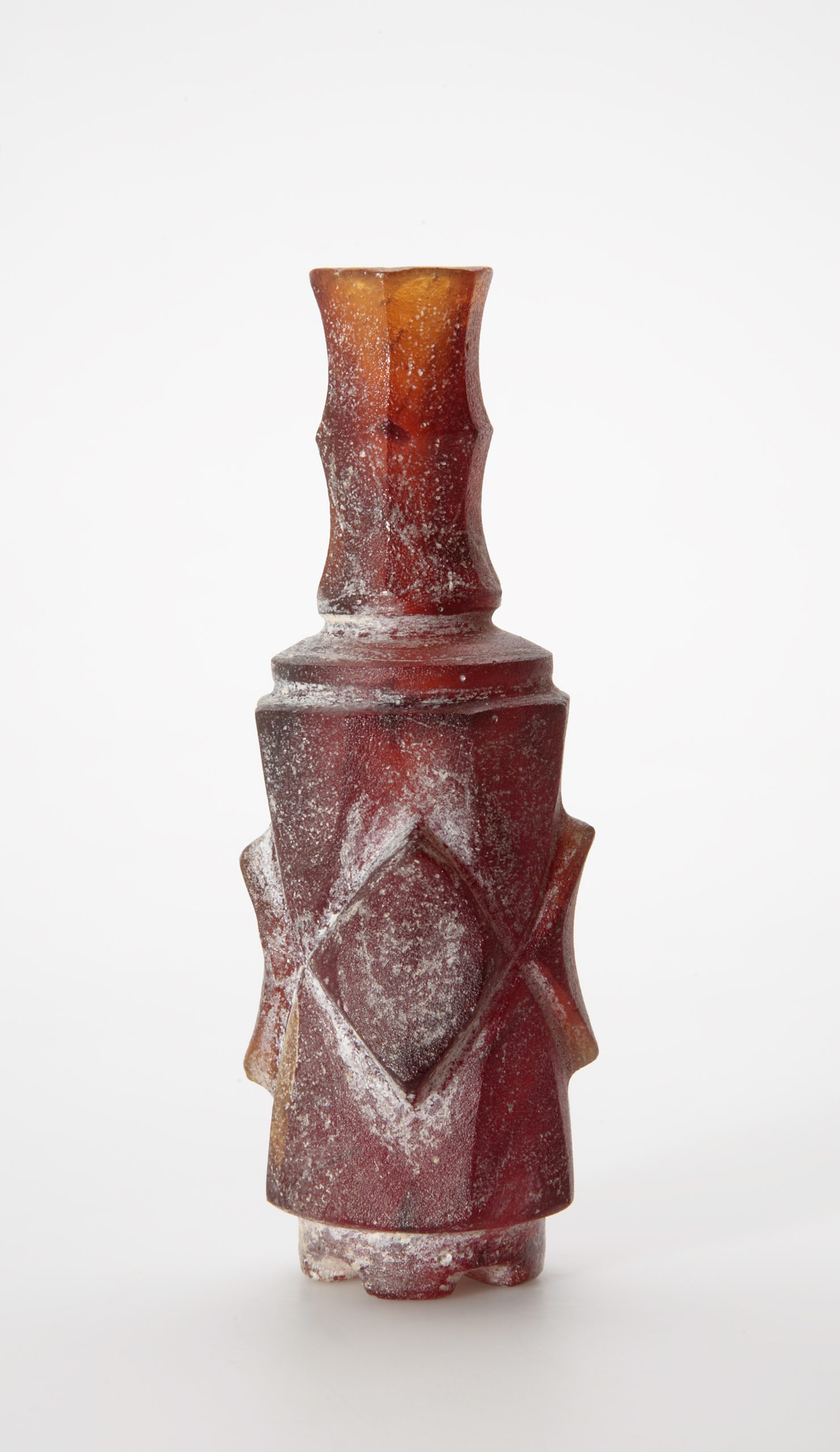 Print Page
Print Page
 Print Page
Print Page
Location: Eastern Mediterranean or Iran
Materials: deep amber or reddish-brown glass with some green streaks; blown in an open mould, linear-, panel- and facet-cut
Dimensions: 12.5 x 4.1cm
Accession Number: GLS 398
Other Notes:
The amber colour of this thick-walled flask is unusual, as is its shape. The neck bears two rows of concave facets; the rim is ground flat. A deep groove separates the neck from the stepped shoulders. The body is panel-cut as an octagon, and four lozenges, deeply cut with concave facets, stand out in relief round the middle. The depth of the carving is even more remarkable when one compares the maximum diameter of 4.4cm (the original diameter of the blank, measured across the maximum relief of two opposite lozenges) with the 3.4cm diameter of the octagonal body (measured across the lower edge of the shoulders). The circular base is inset and its underside is deeply scored with a cross-shaped groove forming four shallow feet.
The thick walls invariably meant small inner chambers, an indication perhaps of the value of the contents.
Bibliography:
S.M. Goldstein et al, Glass. From Sasanian Antecedents to European Imitations, The Nasser D Khalili Collection of Islamic Art, volume XV, London 2005, cat.189, pp.160–61.
